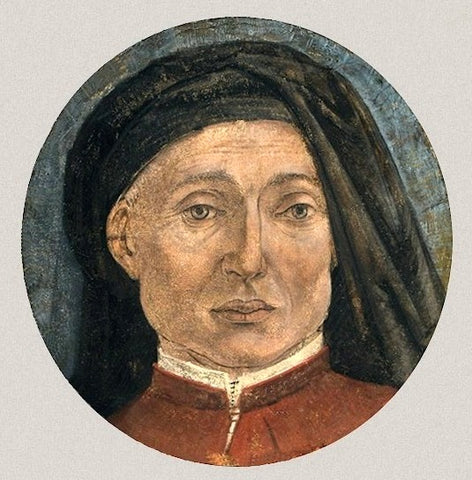Alesso Baldovinetti: The Naturalist Painter of Earliest Landscapes

By Alesso Baldovinetti - Self-photographed (from book), Public Domain, Link
Replicating the natural detail and carefully positioning the subjects with a sense of air and distance, as well as experimenting with colours in frescos and oil, the Italian early Renaissance painter, Alesso or Alessio Baldovinetti, is acclaimed as a notable Florentine painter, whose work exemplified the careful modelling of form and the accurate depiction of light characteristic of the most progressive style of Florentine painting during the last half of the 15th century.
Reputed as the beat worker in mosaic of his day, Baldovinetti was born on October 14, 1427, in Florence, Italy. The oldest child of a rich merchant family, he chose to become an artist. In 1448, he began his studies at the Compagnia di San Luca (painters' guild) before working independently. He attributed much of his early influence to a pioneer of visual perspective art, Paolo Uccello. His earliest work includes paintings for the doors off the Chapel of the Annunciation in Santissima Annunziata (c.1449) and an altarpiece (1450) for the Pieve di Borgo San Lorenzo in Mugello.
It is presumed that from 1441 to 1451, though no official record exists, Baldovinetti assisted with decorations in the church of S. Egidio in Rome, with the artists Domenico Veneziano and Andrea del Castagno. Veneziano's influence is reflected in the clear, pervasive light of his earliest surviving wortks: “The Baptism of Christ”, “Marriage at Cana”, and “The Transfiguration”.
Baldovinetti achieved his fully mature style in his masterpiece, “The Nativity” (1460-62), a fresco in the Church of Santissima Annunziata, Florence. Although Baldovinetti's technical experiments led to the fresco's rapid decay, it shows the pale colors, atmospheric light, and integration of detail with large-scale design that characterize most of his later work, such as “Madonna and Child” (c.1465). Both “The Nativity” and “Madonna” include views of the Arno River valley and are among Europe’s earliest paintings of actual landscapes.
Baldovinetti also did two strips of mosaic decoration over Lorenzo Ghiberti’s doors on the Baptistery in Florence (1453-55) and a “St. John the Baptist” over the south doorway of Pisa Cathedral (1462). He also prepared designs for intarsias, or wood inlays and for stained glass, such as the window of the Gianfigliazzi Chapel in Florence (1466).
Baldovinetti worked on several pieces for the Santa Trinita Church (Holy Trinity) from 1471 and completing them in 1497. He painted an altarpiece of the Virgin Mary and child with the saints Gualberto and Benedetto, which is now in the academy of Florence. There is also a series of frescos based on the “Old Testament” and portraits of some of Florence’s prominent citizens, greatly valued at the time.
On August 29, 1499, Baldovinetti died in the hospital San Paolo, and was buried in San Lorenzo.
References:
https://en.m.wikipedia.org/wiki/Portrait_of_a_Lady_in_Yellow
www.Britannica.com/biography/Alessio-Baldovinetti
www.nationalgallery.org.uk/paintings/alesso-baldovinetti-portrait-of-a-lady
www.virtualuffizi.com/alessio-baldovinetti.html
www.newadvent.org/cathen/02219c.html
https://artuk.org/discover/artists/baldovinetti-alesso-c-14261499
https://commons.m.wikimedia.org/wiki/File:Alesso_Baldovinetti_selfportrait.jpg
